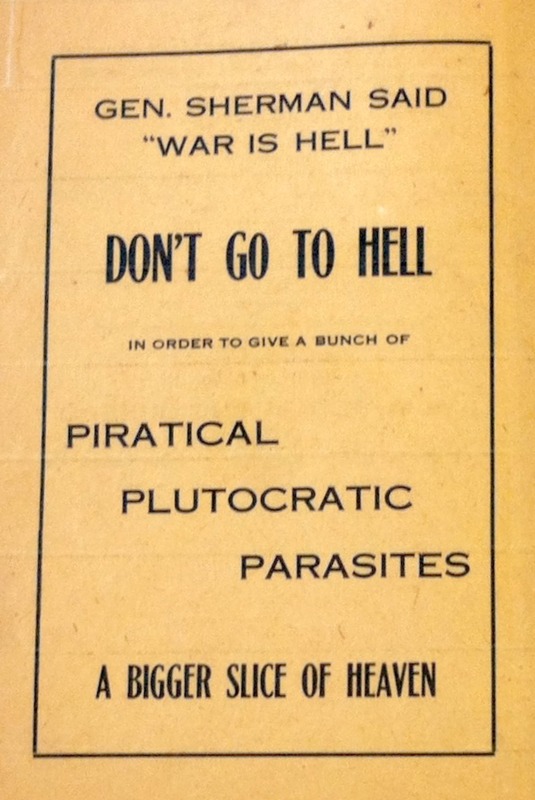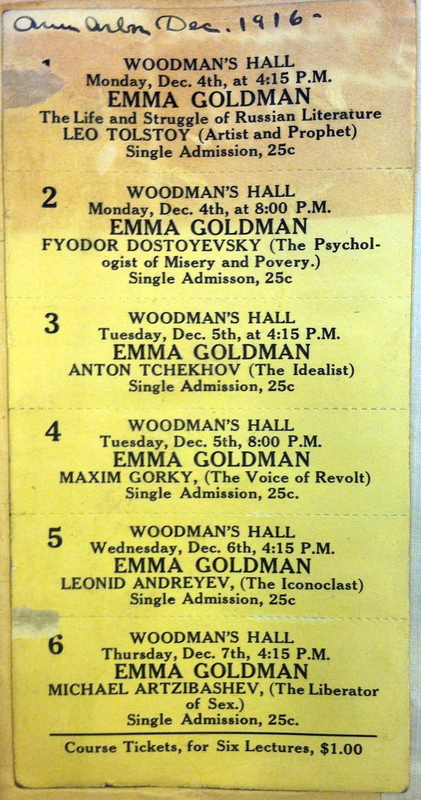Antiwar Activism among Michigan’s radical element
Socialist Antiwar Activity at the University of Michigan
Organized radical politics in the United States experienced its most active and prominent moments in the years leading up to and during the First World War, both nationwide and at the University of Michigan. From the rise of a national discourse on socialism in the 1890’s, socialist politicians began in the first decade of the 20th century to gain strongholds in towns and cities across the industrial North. Ann Arbor was, in this period, a fairly small town whose small, immigrant-fueled working class culture was countered by a prominent university-based conservatism. Thus, the town never faced the kind of class and culture wars that characterized municipal politics in cities like Detroit, and to a greater extent Flint, during this time period.
Radical activity emerged in the most unlikely of places: not solely with the workers at the Hoover Steel Ball Company, but in the basement of the Presbyterian Chapel, with the young student bourgeoisie of a university town. These budding intellectuals were drawn to the almost as young socialist and anarchist movements by religion and social conscience, as well as by radical politics’ rapidly gaining relevance in national and international affairs. In the prewar period, the Michigan Chapter of the Intercollegiate Socialist Society grew to be one of that organization’s largest and most active chapters in the country, with roughly 50 members. The society brought speakers from its national headquarters in New York and held well-attended debates to educate the population of the university on the principles of socialism. Meanwhile, the Michigan Daily and the Daily Times-News conveyed news of the society’s activities to the broader public and published colorful print debates between the proponents of socialism and its various critics (usually, university professors). Radical politics grew to occupy a prominent enough place in the public mind that one Philosophy professor, Roy W. Sellars, went so far as to dignify an otherwise marginal movement with a course on anarchism.
Meanwhile, events occurring on the stage of Detroit’s explosive radical movement trickled west. Prominent anarchist Emma Goldman, often accompanied by Ben Reitman and Alexander Berkman, got into the habit of stopping over in Ann Arbor in between visits to Detroit and Chicago. The small but ardent local community of radicals—headed in many ways by the future archivist of the Labadie Collection, Agnes Inglis—welcomed them with open arms and provided much of the organizational framework for their public appearances. Students made up the overwhelming majority of their audiences. Still, conversations on anarchist and socialist politics in town were confined to a small sphere; these isolated outposts of radicalism existed in a sea of conservative, middle- and upper-class liberalism. Emma Goldman, it is reported, once claimed that she would rather spend the rest of her life in the Jefferson City Penitentiary than in stuffy, establishment Ann Arbor.
When war hit, disagreement over the socialist and labor stance on war fractured platforms of radical organizations across the country. Formally, organizations such as the Socialist Party and the International Workers of the World came out as strongly anti-war, a position which would contribute to their already heavy stigmatization and heighten the controversy and suspicion surrounding them. During this time, the University of Michigan campus was the site of a social and ideological transformation taking place on a much grander scale across the country. In reaction to the war and to socialist and anarchist anti-war politics, the radical base in town and on campus shrunk sizably, leaving only a few hardened, ideological zealots. Surprisingly, the activities of the Michigan chapter of the Intercollegiate Socialist Society appear to have continued unhindered, which is explained by that organization’s nonpartisan and, all in all, peculiarly noncommittal stance towards war. Meanwhile, in town, visits by Goldman and Berkman achieved record lows in attendance and visibility. Assailed by police, these figures were forced to lecture in small rooms above shopfronts and private homes, while news of their presence went almost unreported in local papers.
Notes
Please click images for full descriptions and citations



